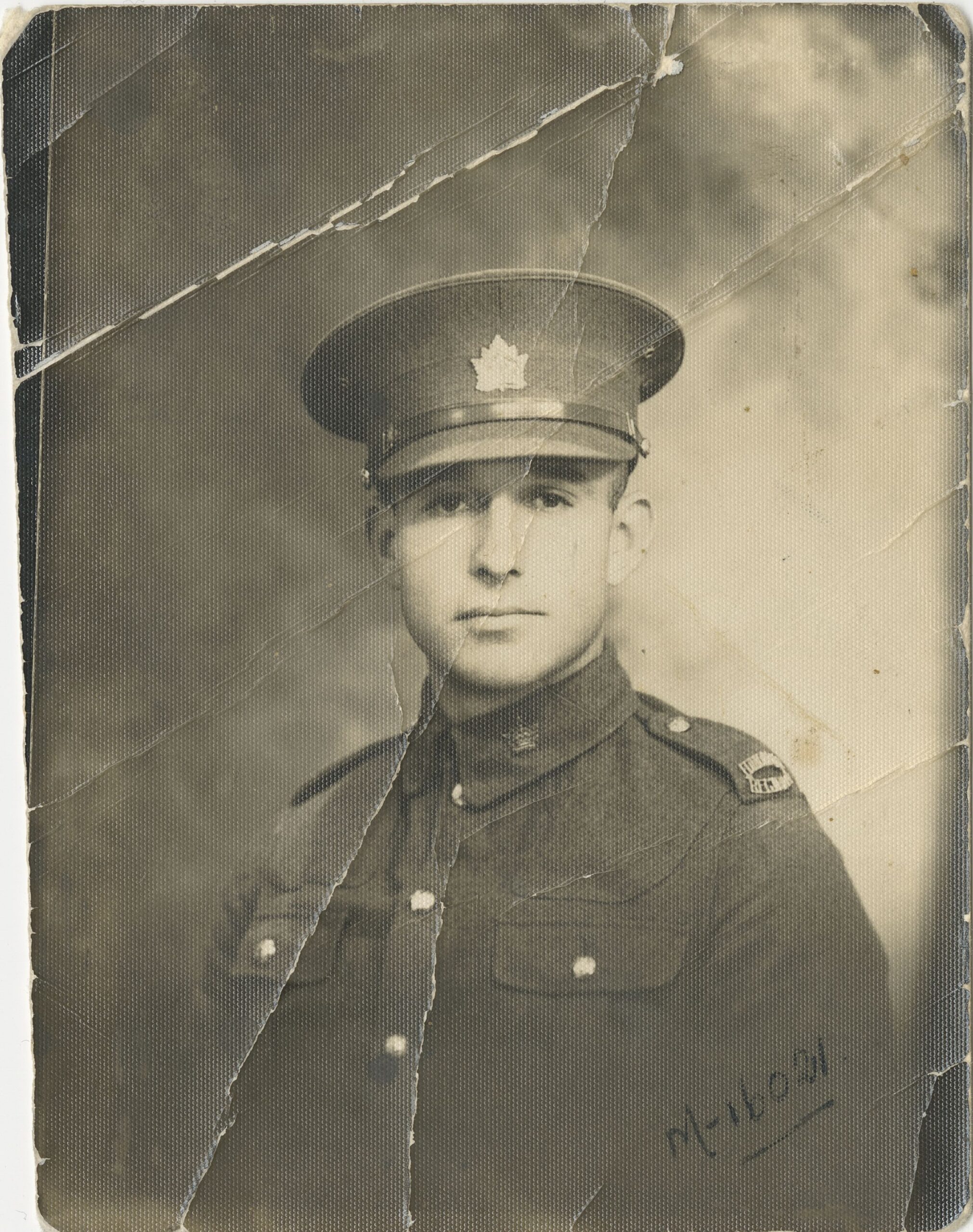“What’s on the newsfeed?”
I stared idly at my screen, browsing away until an article grabbed my attention. It was about a Canadian battalion commander who served during the Korean War (1950-1953) and was posthumously named a Korean War hero.[1] His name was James Riley Stone, a lieutenant colonel of The Loyal Edmonton Regiment, who led the Second Battalion, Princess Patricia’s Canadian Light Infantry during the Korean War. As I scrolled through the article, his faded picture caught my attention. For a commander, he looked strikingly average; there was nothing that stood out about him, aside from his cartoonish mustache. I asked myself “What actions did he undertake during the Korean War for him to be bestowed such high honours?” Curious, I began digging to find out more about this man.
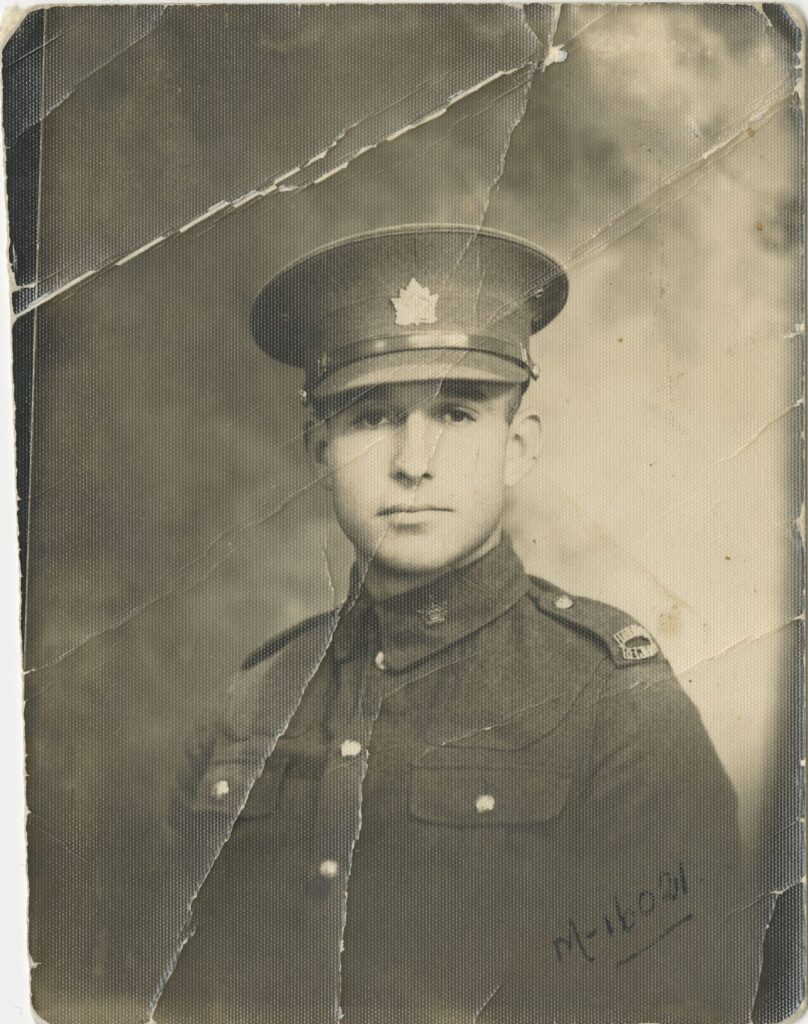
James Stone (1908 – 2005) came from Winterbourne, Gloucestershire, a small village in southern England.[2] At eighteen years old, he moved Alberta to become a homesteader in Blueberry Mountain, a community near Grande Prairie. During this time, he worked in forestry and ranching. Stone had a large presence, standing at six-foot-two and 195 pounds, and exuded charisma, which became the inspiration for his nickname “Big Jim.” He was described as a young man with a “ferocious black moustache.”[3] At the onset of World War Two (WWII) in 1939, he enlisted as a Private with what was then known as the Edmonton Regiment (in 1943, it was renamed the Loyal Edmonton Regiment, popularly known as “The Loyal Eddies”). Stone rose through the ranks quickly. Within three years, he achieved the ranks of Lance Corporal, Warrant Officer Second Class, and finally, the Loyal Edmonton Regiment’s Regimental Sergeant Major.[4] Yet, this wasn’t the end of Stone’s military achievement, as his actions during the Italian Campaign in WWII made him one of Canada’s most decorated soldiers.
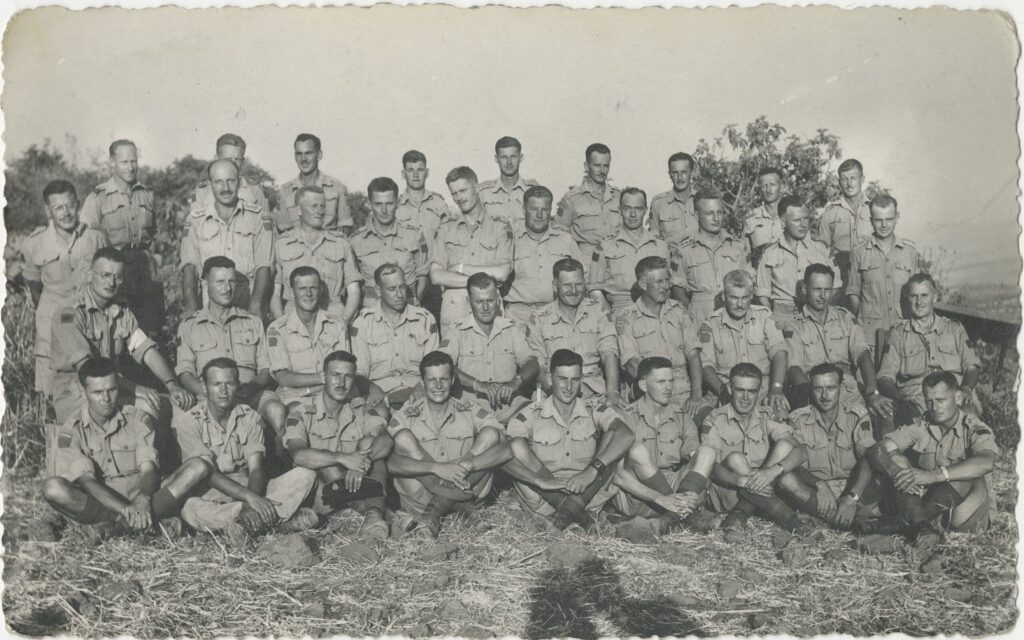
During the Battle of Ortona (1943), Stone led a group of men who were stopped by a German anti-tank gun. Stone, with immeasurable courage, threw a smoke grenade, dashed forward and then dropped a fragmentation grenade over the anti-tank gun armour shield, silencing it. This feat led to him receiving the Military Cross. In the following year, Jim earned the Distinguished Service Order (DSO) for advancing anti-tank guns at San Fortunato. By late 1944, Jim was given command of the Loyal Edmonton Regiment, earning the rank of Lieutenant Colonel. Stone was well known for his leadership, commanding his men in successful battles in Italy and Holland, and earning him his second DSO.[5]
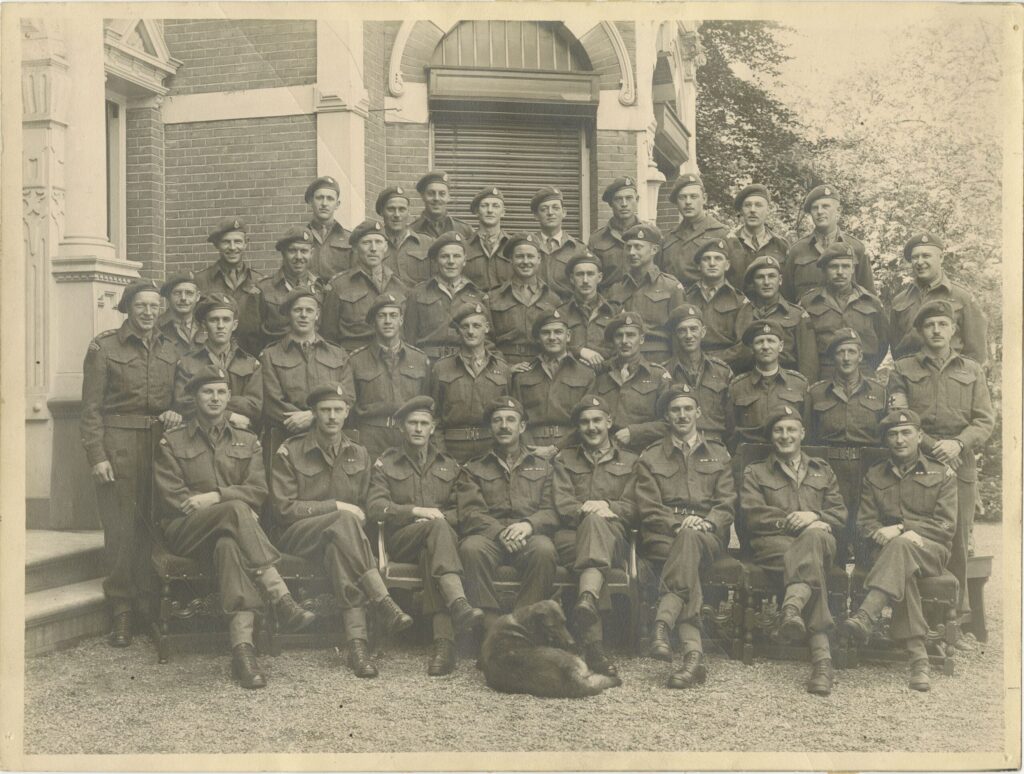
At the end of WWII, Stone transitioned back to civilian life in British Columbia, where he later took command of the Rocky Mountain Rangers, a primary reserve unit under the 39 Canadian Brigade, located in Kamloops and Prince George.[6] However, this transition was short-lived. Stone was called to command the Second Battalion, Princess Patricia’s Canadian Light Infantry (2 PPCLI) in the wake of the 1950 Korean War.[7] 2 PPCLI was a battalion composed of volunteers, all of whom came out of civilian life. This army wanted the adventures of war, combat experience and cared little for politics; these were the people Stone wanted in his battalion. The men who volunteered hailed from different backgrounds, coming from all parts of Canada; some from Alberta. Yet, they all came for one purpose: to fight in the war.[8]
Upon returning to active service, Stone was welcomed with open arms. He was well respected and had a reputation that preceded him due to his actions in WWII. Known for his natural leadership skills, charisma, and being “a soldier’s soldier,” Stone was described as the type of leader who “sparks” his command.[9]
Once the 2 PPCLI landed in Korea, Stone was greeted by a representative of the American General Johnnie Walker, who wanted to send Stone’s men straight to the frontlines. Stone refused and was given written confirmation by Ottawa that his men would not be sent into combat until he felt that they were ready. He informed the Americans that his troops would need eight weeks to toughen up, angering the Americans. Stone stood firm and went to Seoul to talk with Walker, who had no choice but to accept Stone’s conditions. On New Year’s Eve, the 2 PPCLI arrived at Miryang, a village near Busan, to begin their training in an area that was swarming with combatants.
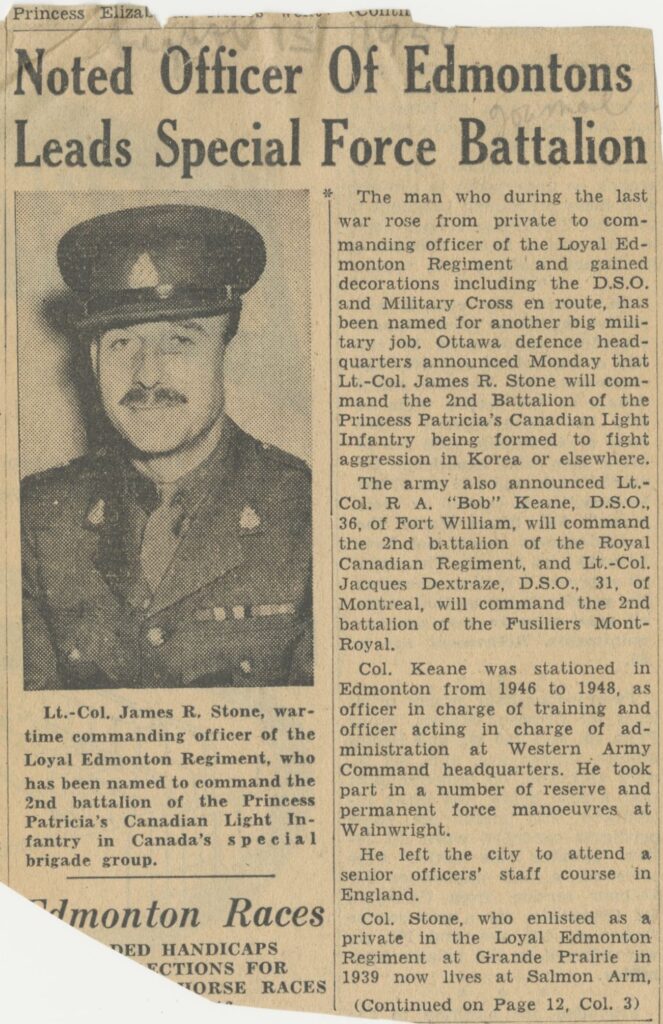
Stone was an unrelenting, draconian-like leader to his troops. He knew his men were ill-equipped in both weapons and training and wanted to increase their chance of survival. Some of his approaches went so far as setting up a punishment camp to deal with troublesome soldiers and leading his men to see a group of Americans, found dead in their sleep bags and stripped of their clothes. Stone saw this as an opportunity to teach his men, confiscating their sleeping bags and issuing them a mere blanket, reminding them about how fickle war can be. This training at Miryang was a way to weed out unfit soldiers, sixty of whom were sent home.
Stone’s most notable achievement during the Korean War was in the Battle of Kapyong (April 22-25, 1951), where he proved why he was one of Canada’s most exceptional military strategists. He positioned his companies 330 yards apart from each other, the gaps being filled with mortars and machine guns. He understood the risks, knowing that each company would have to defend themselves. Yet, things were about to turn for the worse. As the soldiers of the 2 PPCLI prepared for the battle, they received correspondence that the South Korean troops had begun to flee with the civilians, unable to hold their ground against the North Koreans and Chinese. The Australians, positioned a mere two miles east away from the Canadians, soon met a similar fate, their camp being overthrown by the Chinese.
On April 24th, 9:30 p.m., there were reports of thousands of enemy soldiers surrounding Stone’s battalion. Big Jim’s men knew they had to hold their position, despite fears that they weren’t going to make it out alive. Stone remained collected, directing his men with fierce charisma, telling them that “Nobody could pull out. If we lose that hill, we lose it all!” The 2 PPCLI never wavered; even the Chinese knew that they were fighting soldiers who were not going to give up.[10] By the end of the battle, the Canadians only lost ten soldiers and emerged victorious, a reflection of Stone’s leadership, his defence tactics, and the tenacity of his soldiers.[11] This battle marked Stone’s last participation in the war, as he was honourably discharged after receiving news that his daughter was severely ill back at home.[12]
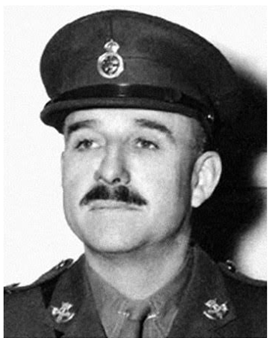
His efforts in this battle led to him being named a Korean War Hero by the Ministry of Patriots and Veterans Affairs in Korea. Stone and 2 PPCLI are remembered at the “Legends of Kapyong.”[13]
It is safe to say that appearances can be deceiving. In the case of Big Jim, although his large stature helped with his charisma and presence, it was ultimately his leadership skills that made him an exceptional commander that led his troops to victory during one of the most crucial moments of the Korean War.
On July 31, 2025 this story was edited to correct some factual errors.
Thank you to the team at the Loyal Edmonton Regiment Military Museum for research support and images for this story.
[1] JiAe Sohn. “Canadian Lt. Col. Stone Named Korean War Hero.” Korea.net. December 5, 2016. https://www.korea.net/NewsFocus/policies/view?articleId=142461.
[2] “94 Jim Stone.” The Military Museums. Accessed August 4, 2024. https://mural.themilitarymuseums.ca/panels/row5/94-jim-stone.
[3] Tim Lai. “Life&Times: ‘Big Jim’ Stone was one of the great figures of Canadian military history.” Edmonton Journal, December 5, 2005; “‘Stoney,’ One of Unit’s Great Commanders.” The FortyNiner: Publication of the Loyal Edmonton Regiment Association, July 1946, The Loyal Edmonton Regiment Military Museum, Edmonton, Alberta, Canada.
[4] “94 Jim Stone.”
[5] “94 Jim Stone.”
[6] “The Rocky Mountain Rangers,” Government of Canada, accessed September 8, 2024, https://www.canada.ca/en/army/corporate/3-canadian-division/the-rocky-mountain-rangers.html.
[7] “94 Jim Stone.”
[8] Dan Bjarnason, Triumph at Kapyong: Canada’s Pivotal Battle in Korea, (Toronto: Dundurn Press, 2011), 23-24.
[9] Snippet of newspaper provided by the Loyal Edmonton Regiment Military Museum.
[10] Bjarnason. Triumph at Kapyong, 27-32, 36-38, 51-54, 56-59, 69, 74.
[11] Renee Charbonneau, “Commemorating Colonel Stone,” In Remember: Newsletter of the Loyal Edmonton Regiment Museum, 2023-4 Edition (2023), 5. https://www.lermuseum.org/images/stories/pdfs/rem_23-4.pdf.
[12] “94 Jim Stone.”
[13] Sohn, “Canadian Lt. Col. Stone Named Korean War Hero.”

